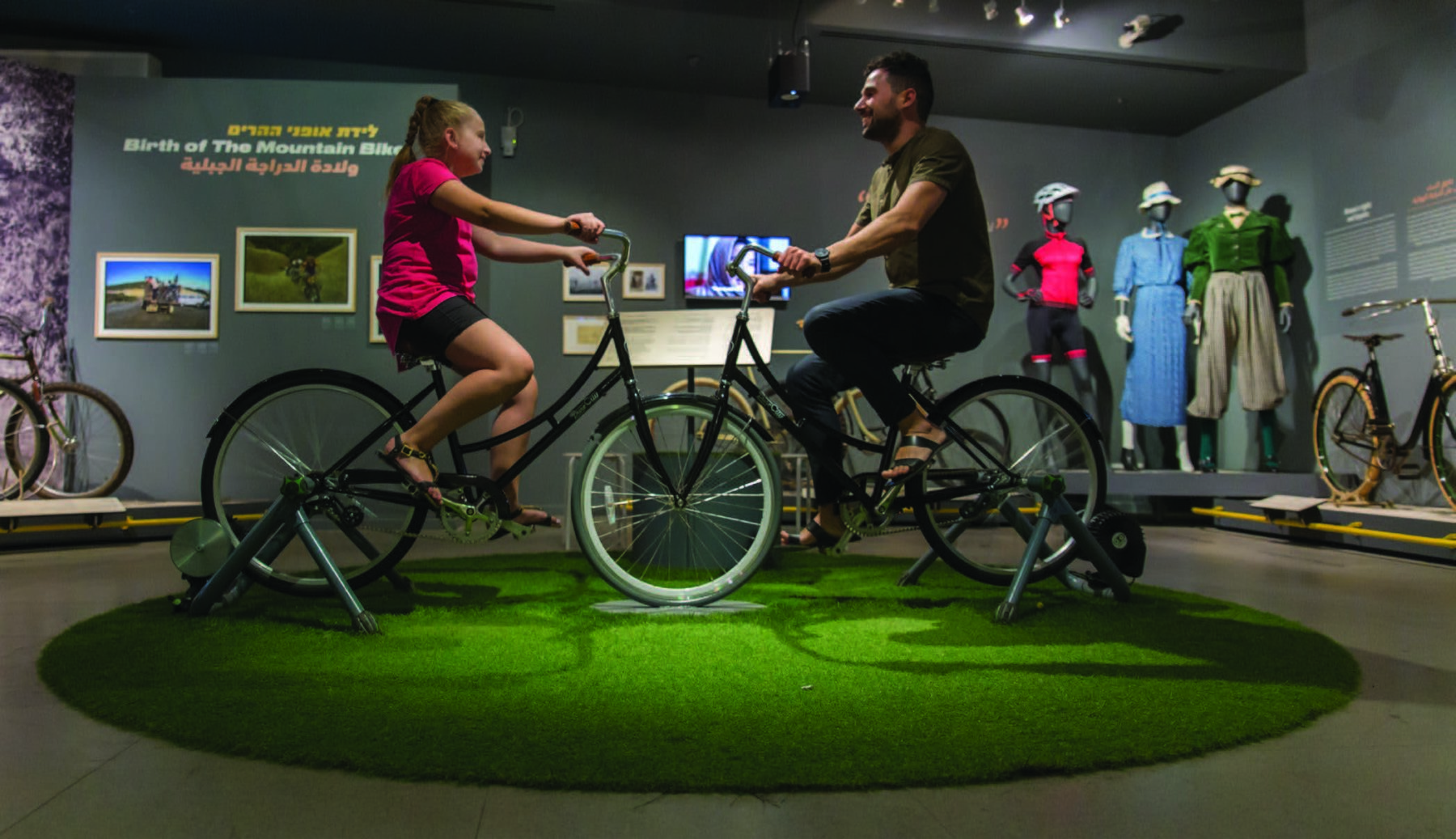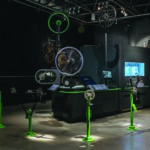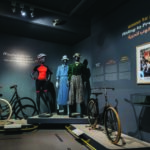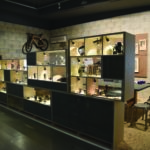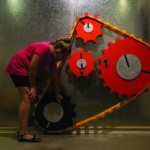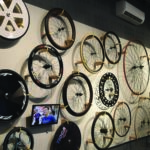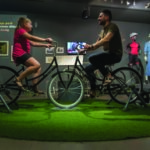Teo: Over the past four years, your institution has performed a very ambitious redevelopment programme, which led to the creation of a widely-acclaimed new museum, a new collection and conservation building, and the launch of a new brand, Ingenium. As Canada’s national museums of science and innovation, your institution holds outstanding science and technology collections of national importance and international resonance. How does the touring of exhibitions fit in your organisation within the new redevelopment context?
Julie Leclair: Historically, we focused on small travellers for Canadian venues. As a national institution, we are mandate driven and part of our mandate is to make sure that our national science and technology collection can get out across Canada. We started small quite purposely, to make sure that regional and remote museums could get part of our national science technology history in their venues. We currently have 13 travellers; they range from 10 to 300 square metres.
Now that the Ingenium brand has come out, we want to broaden our reach internationally. We believe that a really good way to do that is through travelling exhibitions. Canadians have some incredible science, technology, and innovation stories to tell — that have influence on the world at large. We want to be able to tell the world about them!
What is the Bike it! travelling exhibition about?
The Bike it! exhibition tells a global story of the bicycle through three main themes. The first is the machine, exploring the technology itself. The second is the human body that powers the machine. The third theme is society; specifically, cycling in society and how cycling has impacted society, with the examples of pigeon bikes in China, Buffalo bikes in Africa, and the development of the mountain bike in California.
Ingenium has five bicycles, archival material, and 30 pieces of ephemera from our very well-researched and internationally renowned collection in the exhibition, along with 30 pieces from the Velorama collection from the Netherlands. The exhibition also has prototypes of new technology that have been lent by innovative companies from around the world.
The intellectual property is owned by the four of us, we are co-owners and co-creators of this exhibition and we are presenting it at each of our venues in a jointed tour.
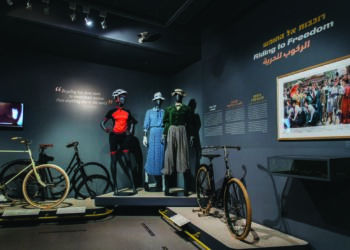
What development model is the travelling exhibition based on?
The exhibition is a co-production. We are four partners: Ingenium in Ottawa, Canada, the Bloomfield Science Museum in Jerusalem, Israel, Universum in Bremen, Germany and Città della Scienza in Naples, Italy. The intellectual property is owned by the four of us, we are co-owners and co-creators of this exhibition and we are presenting it at each of our venues in a jointed tour.
Partnerships are the best way to go forward with this kind of international exhibition. Financially, the model is more viable for us. For smaller exhibits, we fund them ourselves. Being able to do co-productions, where we “only” have to put in our share the exhibition costs, just makes sense to us. It’s something that we’re going to continue to look at for large, international travellers. That economic driver is a key part of these wonderful experiences.
We are also now opening the project to new hosting venues. I don’t know if we will ever get to cost recovery. Doing that is really hard. But it’s not the driving reason we want to get involved with these kinds of partnerships.
For the content development, how was the curatorial experience designed between all partners, being in so many remote locations?
The curatorial work and exhibition design was primarily done by the Bloomfield Museum. While we were involved with the development of the themes, we were also in the middle of building a new museum. But working with partners offered us the opportunity to explore stories from different perspectives. While this can be challenging at times, it enriches the visitors’ experience, which is a wonderful thing. When the exhibition comes to Canada, we will also be adding in Canadian and North American content. Another great thing about this partnership is that each institution is bringing in their own stories, their own programmes, and their local partners, which makes a really flexible and attractive model for partners.
Could you give examples of how the content and interpretation of the exhibition have been enriched by the international make-up of the team?
In Bremen they created a city map that people could walk through, and they were riding bicycles through their centre for the opening. First we wondered, “How can you ride bicycles through your institution?” It is those germinations of ideas that working with institutions that are not culturally the same as yours can trigger. It is scary sometimes, but it pushes our boundaries. It makes us think a little differently, and opens us up to new ideas.
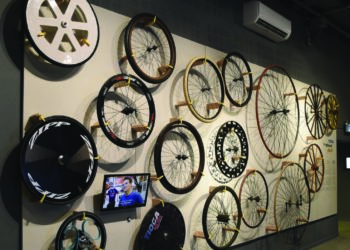
Each institution is bringing in their own stories, their own programmes, and their local partners, which makes a really flexible and attractive model for partners.
It’s that knowledge and idea sharing aspect that we really like. We think we are good at a lot, but we know we’re not perfect at everything. For instance, the Bloomfield has a full imagination workshop, they do everything on site and develop some wonderful interactives. Pairing with them enabled this exhibition to gain these incredible interactives that were all developed in house. Being able to work with these other institutions and learning how they work has been such a great experience.
Our partners have benefitted from getting a whole new type of visitor to their institutions, because they are bringing in a collection-based exhibition — which they don’t often get. We got some really beautiful bikes from the 70s that people are going to remember. So, it’s that nostalgia piece as well, that often science centres don’t have.
Beyond financial incentives and the internationally enriched content, what else did you gain from this collaboration as a team and as an individual?
We’ve gained a broader international network that we didn’t have before, which is part of our motivation moving into the international travellers market. We have also gained relationships. I now have somebody in Israel that I can call. For instance, in Israel they are such innovators on agriculture; I can now reach out to the Bloomfield when exploring future food trends with the Canada Agriculture and Food Museum. It is those connections that we get to make when working with an international team, it’s a by-product. I think a lot of people downplay that aspect. It is not all about revenue and cost recovery. Being able to have that human on the end of the line, that friendly face that you can call to talk and generate ideas. Knowing that there’s somebody else excited — who knows the language of science museums and centres and partnerships and innovations — that you can speak to. For me, the touring exhibition is the nucleus of it all. Then you have all your little neurons going all around your nucleus, and those are the added value of having a connection on the other end of the line.
Then you bring those lessons learned about collaborating and reaching consensus. I learned a lot about reaching consensus on this. It is not always easy; sometimes it can be uncomfortable. But when you do it successfully, you build a stronger relationship and you build a stronger product, something that everybody is happy with. A key factor of success here is to be working with people that are enthusiastic, excited. While we did not all think the same or had the same ideas of how this was going to move forward, we were all really happy to be working together, to be able to come to that consensus. That has been such a great experience for us, and for me personally. That kind of professional development is invaluable.
A healthy exhibit timeline is two years, three if you are really lucky, 18 months if you are really pushed at it; to do it in 12 months was slightly crazy.
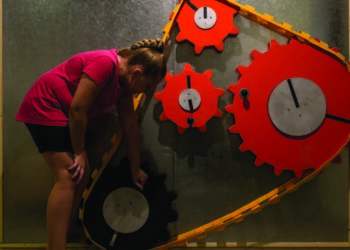
What were the main challenges your group of partners had to tackle in the development process?
The timeline was a key challenge. In June 2016, at the Ecsite conference in Graz, the partners came together and decided to do an exhibition for the two-hundredth anniversary of the bicycle. This was about a year after the first conversations were had. Maya Halevy had come to Canada, and both the Bloomfield and Ingenium were excited to start a project together. We spent the next year building the relationships, having staff exchanges, and reaching out to other institutions to find more partners. Once the decision was finally made in Graz, the exhibit opened in June 2017 at the Bloomfield Science Museum in Jerusalem. So, from the partners kick off to opening a 600 square metre exhibition, we had 12 months! A healthy exhibit timeline is two years, three if you are really lucky, 18 months if you are really pushed at it; to do it in 12 months was slightly crazy. But the Bloomfield could do it. Being able to work with an institution that has that kind of flexibility — and those kind of resources — was wonderful, because they were able to pull it off.
The contractual aspects were a bit of a challenge as well: partnership agreements, shipping agreements, insurance indemnifications, copyrights, taxes, customs. It was complex. For example, Germany and Israel have very different insurance indemnification laws and copyright laws. So all these documents going from country to country are different, and it takes time and dialogue to get them right.
Overall, the biggest risk for us was not knowing what the outcome was going to be. Being so far, we can see design sketches, schematics, prototyping, and photos of what they are doing. But that reputational risk — of going into something and not being able to have that control over the final product on such a quick timeline — can be very challenging.
Finally, a lot of people will think time zones and languages would be the key challenges, but it is really more about corporate culture. Working with four different institutions in four different countries, we had to deal with a lot of diplomacy, tact, and flexibility. Because there are different ways of having to reach consensus, and different senses of urgency and timelines.
The exhibition is currently displayed at the Città della Scienza in Naples. What comes next for Bike It?
The exhibition will travel to Copernicus in Warsaw, Poland, opening in June 2020. After a year at Copernicus, it will be coming to Canada. After five years on the road, we are planning to do a major refurbishment.
It started with us and Bloomfield really excited to work together. It is just like a bubble diagram that keeps expanding; it will continue to grow for the next two years even before it comes to us. Hopefully, we will grow it further with a North American tour.
Sources
https://ingeniumcanada.org/newsroom/bike-it-travelling-exhibition-cruises-into-naples-italy
https://www.mada.org.il/en/exhibitions/BicycleExhibition2017
Exhibitions mentioned
Bike it!, currently displayed at the Città della Scienza di Napoli, Italy, until April 2020
Bike it!, displayed at Universum® Bremen from July 2018 to May 2019
Bicycle Exhibition 2 x 200, displayed at the Bloomfield Museum from July 2017 to May 2018

About Julie Leclair
Julie Leclair is the Director of Travelling Exhibitions at Ingenium – Canada’s Museums of Science and Innovation, supporting the Corporation’s mandate to encourage Canadians, and people from around the world, to learn about STEM and its impact on our everyday lives. Julie’s passion for Canadian history, her pride of being a science geek and her love of travel has come together into the perfect job.
Prior to her current role, Julie was responsible for corporate and strategic planning for Ingenium. Julie has worked in the museum field for 20 years at various institutions including the Canadian Museum of Nature, the Canadian War Museum and the Canadian Museum of History. Her expertise include exhibition development, strategic planning and project management.

